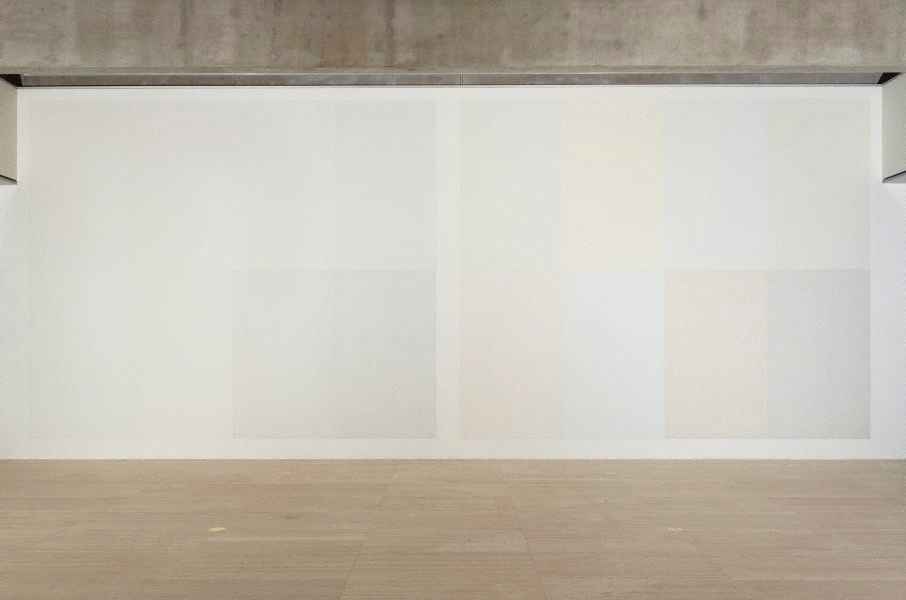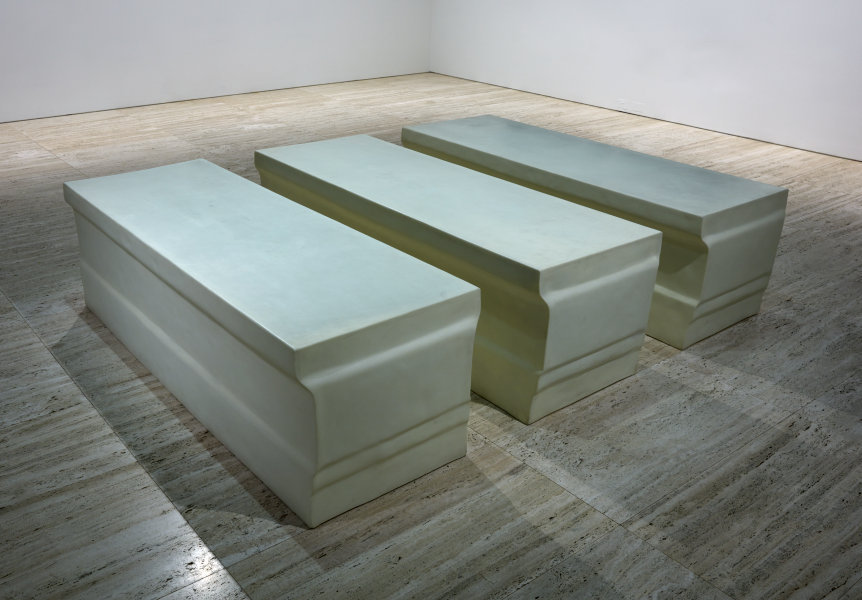Sometimes, however, I feel as though it is April Fool’s Day, and I find myself looking for the candid camera, such as at the Contemporary Gallery of the Art Gallery of New South Wales in Sydney. I realise some people might like this, and fair play to them, but for me there is a line and this is where I draw it. These really are the Emperor’s New Clothes.
If the explanation is more artistic than the execution, it is a failed project. The real artist is the curator or whoever has written this guff – the more you need to write; the less successful the artwork. Now, I’m all for words and words for all, and I agree that great art can be complex and evade easy interpretation; it can draw you in and make you think, but these particular pieces just made me laugh. And not in a good way. See for yourself.
 |
| Wall Drawing #337 and Wall Drawing #338 by Sol Lewitt |
His Wall Drawing #337 looks like a series of test paint colour spots on the wall, as a home rennovator decides which shade of magnolia they want in the hallway. Apparently they are created by ‘professional draughtspeople following Lewitt’s instructions’ thus making the instructions themselves the work of art. Seriously, that's what it says.
The descriptor adds that the works are manifested by others – all are slightly different and no single work is the definitive version. The pretentious artist piffles on that it is ‘as though I am writing a piece of music and somebody else is going to play it on the piano.’ There are another 336 of these? They are certainly four-letter drawings beginning with 'w'.
 |
| Canopy LI by Brian Blanchflower |
The coarse thickness of paint on the support and then repeated gestures that both recede and deepen, and the layering of pigments, visually swell the material surface. The effect of the paintings is meant to be similar to the under-painting of Monet’s late water-lilies, as the angle of the light is reflected from the surface to reveal structures and grids embedded in the layers of paint, as you move around the room.
Pictorially the images map out the rhythm of time passing with marks, gestures and colour. The multiple layers of colour and mineralised paint suggest geological accretion. Metaphorically they chart the passage of the heavens or the earth; “this expression of the void in the earth, of being and nothingness, invokes the horizon where consciousness and materiality lightly touch.”
 |
| Untitled (elongated plinths) by Rachel Whiteread |
"Rachel Whiteread is known especially for her negative casts of domestic spaces, in which she turns empty space into a solid. Here she has cast the plinth forms in the negative from a classically moulded silhouette of a dado that has been stretched to make a positive form the size of a bed or a mortuary slab. They are exactly the right size to be containers for the human body and could easily be read as sarcophagi.
"In addition to being made strange by elongation, the material is a semi-opaque white plastic over foam, which has an oddly ambiguous materiality. From a distance it could be marble, reinforcing the tomblike appearance. At close quarters, however, the light seems to be within the objects, or passing through them. This apparent transparency or luminosity makes them very mysterious, like the cryogenic containers so often represented in science fiction movies."
No comments:
Post a Comment